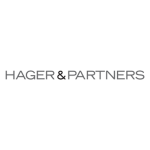Article 4 of the Law Decree No. 34 (Growth Decree – published in the Official Gazette on April 30 2019) introduced important amendments to the previous patent box procedure. In fact, it allowed companies to determine the eligible income for patent box purposes in tax returns by themselves, deriving from the direct use of intangible assets, while avoiding the advance ruling procedure with the competent tax office.
The Commissioner’s provision issued on July 30 2019 contains the implementation rules for the amendments introduced by Article 4 of the Growth Decree.
Circular letter No. 28/E
After a first public consultation draft was released in February 2020, the Italian Revenue Agency published a circular letter on October 29 2020, aimed at providing detailed explanations regarding the new patent box procedure allowing self-liquidation.
The document is made up of nine chapters. The first one is a short introduction recalling the law and the provisions of the Revenue Agency concerning the new patent box regime, while the second chapter contains useful definitions.
Chapter 3 underlines the purposes of the new regime. First of all, the use of the tax break should simply reduce the time of the procedure. Moreover, it also introduces a penalty protection regime.
Chapter 4 describes the main characteristics of the new regime. A preliminary important clarification written in the circular letter states that in case of the direct use of the intangible, the preparation of the dedicated supporting documentation is mandatory for those companies which intend to self-liquidate the eligible income and related tax benefit. When the said documentation will be considered compliant with the Revenue Agency’s requirements, the taxpayer will benefit from the penalty protection in case of a challenge after a tax audit. In the case of self-liquidation, the tax relief will have to be split in three equal yearly instalments.
In case of the indirect use of the intangible, the company that chooses to adhere to the new regime will benefit from the tax relief in a unique instalment – similar to the conditions in the old patent box regime – and from the penalty protection when proper patent box documentation is prepared.
Chapter 5 provides clarifications concerning the different ways that taxpayers have at disposal to benefit from the patent box regime. This includes compliance aspects to fulfil to be admitted to the regime, direct and indirect use of the intangible, preparation of the specific documentation and penalty protection, and a deduction in the tax return. In addition, the Revenue Agency clarifies the consequences of withdrawal from the negotiation in relation to ruling procedures activated in previous years, as well as the circumstances under which taxpayers with indirect exploitation of the intellectual property (IP) can get the penalty protection on previous fiscal years (i.e. closed before the entering into force of the Growth Decree).
Chapters 6 to 9 provide specific clarifications on the contents of the documentation to be prepared, simplification measures dedicated for small-and-medium enterprises (SMEs) and the consequences of the disregard of the documentation for penalty protection purposes.
Final remarks
The amendments to the patent box regime have the clear intent to simplify the procedure and make it easily accessible for eligible taxpayers.
In this view, the new regime represents an important help to those taxpayers previously obliged to pass through the ruling procedure. The possibility to consider the tax relief in the corresponding tax returns can be important in the view of correct financial planning, especially during time affected by COVID-19.
Nevertheless, by adopting a two-fold risk mitigation strategy, companies shall carefully evaluate the possibility to apply for the ruling procedure for the first period of access to the patent box regime (five-year duration). In fact, this would allow them to advance negotiations with the tax office to agree on the methodology to calculate tax relief.
Afterwards, particularly when the business model remains unchanged, they could opt for the self-liquidation procedure and the penalty protection. Accordingly, taxpayers would limit their tax risk exposure in future inspections and immediately get the benefit (even if dived into three) in the tax return without having to wait until the close of the ruling procedure.
Gian Luca Nieddu
T: +39 02 7780711
E:
gianluca.nieddu@hager-partners.it
Barbara Scampuddu
T: +39 02 7780711













